Peter Dornauf – 11 May, 2018
There is something subversively comical in the use of abstract forms being employed to narrate a three-hanky weepy. Peary's 'Are We Lovers Who Aren't In Love?' continues, unabated, the tearful tale matched with all the bravura leaps and virtuoso pirouettes that the shapes and lines take. This is ‘chick flick' meeting non objectivity, a tearjerker clasping hands with calligraphic automatism.
Hamilton
Chelsea Pascoe, Nicholas Megchelse, Rachael Hope Peary
No Holiday
26 April - 12 May 2018
Abstraction is the art of paring back, but in the current show at Weasel Gallery, Hamilton, (new contemporary art space established and managed by Laree Payne) artist Rachel Hope Peary plays the reductive game, while piling on the ingredients, maximizing content. The latter is signalled by the titles she gives her swirling lined forms that come in various colours and thicknesses. A whole dramatic narrative is loaded onto these slim notations—yellow, white, red, pink squiggles, blocks of paint and other spinning slender annotations.
It begins with the first work, This Is Not A Grey Area, Non-consensual Is The Wrong Word. Immediately we are plunged into a fleshed-out world of theatrical proportions involving protagonists in some intense and contested relationship. This subject continues to work itself out, emotionally and blatantly in subsequent paintings.
A Quiet Meal, A Glass Of Red Wine, A Heavy Chat helps set the scene and provide context. The means are minimal and trimmed back but the subject goes for the jugular. The painting presents hieroglyphics of agitated twists and twirls of paint evocatively worked across a pure flat black background. A thick grey line loops back round on itself, creating a noose formation while other configurations—white, mute orange, pink and quiet red and green—dance, leap and intertwine themselves about the central coil.
These doodle-like lines are executed with a confident assurance. The seemingly random is made to cohere while expressing all that is encapsulated in the title. The sombre setting, the slightly frantic lines, the immolation of the loop, all attest to a fraught exchange between two personalities at odds.
In terms of their aesthetic, this is Cy Twombly in a minor key, but all the better for that. The focus and concentration is intensified because of the minimal forms used here where every line and shape count and work. Perry gets the tension and balance right in this high risk venture.
The title of another work, Call Me On Your Way Back Home, betrays a certain nervous anxiety bordering on the neurotic and continues the soap opera performance. And as if to add to the melodrama, the painting hints at a heart shape while suggesting a gaping mouth.
Now all of this may simply be a ruse, a means to a send-up, at the expense of the nature of the art genre involved, abstraction’s history of high seriousness and metaphysical pretension. There is something subversively comical in the use of abstract forms being employed to narrate a three-hanky weepy. Are We Lovers Who Aren’t In Love? continues, unabated, the tearful tale matched with all the bravura leaps and virtuoso pirouettes that the shapes and lines take. This is ‘chick flick’ meeting non objectivity, a tearjerker clasping hands with calligraphic automatism.
Irony abounds here given that classic abstraction embodied highly romantic and idealistic claims while Peary plays out the romantic sudser with biomorphic and geometric patterns taken from the art genus. A further work, Now I Have A Sinking Feeling could represent her whole artistic enterprise, tongue in cheek.
Peary’s inclusion of small sculptural forms that mimic the configurations found in the paintings adds another light layer to the works. And lightness is attested to in the paintings themselves, constructed as they are on stretched cotton that possesses a translucent look.
The second artist in the show, Nicholas Megchelse, works with a more textural abstraction, but like Peary, also cocks a snook at the category. His slacker art style, deliberately clumsy and clotted, employs overblown titles that mock the inflated assertions of the quasi-mystical status of historic abstraction. She’s My Queen Undressing In The Sun is a typical example, with its roughly configured yellow splodge of paint painted on a lurid pink background containing what could be white cloud or landscape forms—all configured in a consciously dilettante manner.
Chelsea Pascoe is the third artist in No Holiday. She again is working with abstraction but at odds with its lineage. Her sculptural pieces are entirely made up of layered chunks of tissue paper which are coloured in bright loud yellows, greens and purples and covered in a protective polyurethane. These thick squared lumps of thin paper, with their viscous encrusted surfaces, speak of all things mundane and temporal, in contrast to more conventional sculptural works made of durable marble, steel, wood, in order to partake of the eternal.
Scaled to sit on mantle-pieces, these modest creations refer to major contemporary concerns — recycling, conservation, waste. Compacted with hundreds of layers of tissue, they are reminiscent of those crushed blocks of discarded detritus found at rubbish processing stations. As coloured abstract paintings with corrugated surfaces they recall the veined dribble lines of Pollock or the encrusted surfaces of Philip Guston or Lee Krasner. Unlike Peary or Megchelse, Pascoe has no need to provide overblown titles. As Untitled, her works speak for themselves.
The three artists brought together here provide an interesting barometer on the direction young artists are taking these old aesthetic tropes, reworking them for a new generation inhabiting a changing and very different world.
Peter Dornauf
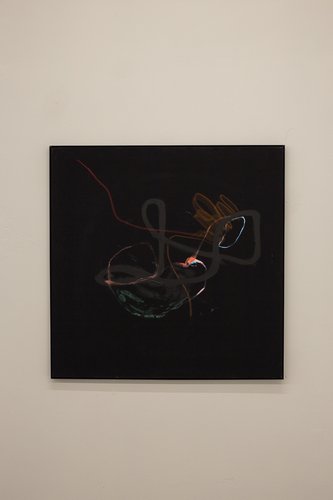
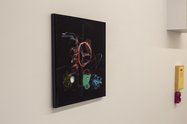

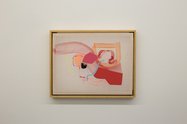


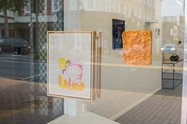

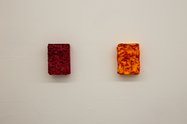

 Two Rooms presents a program of residencies and projects
Two Rooms presents a program of residencies and projects Advertising in this column
Advertising in this column
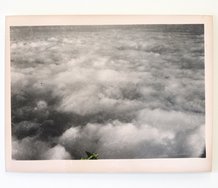
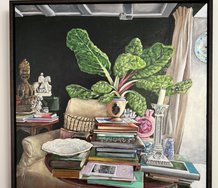
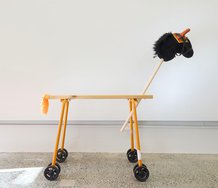
This Discussion has 0 comments.
Comment
Participate
Register to Participate.
Sign in
Sign in to an existing account.